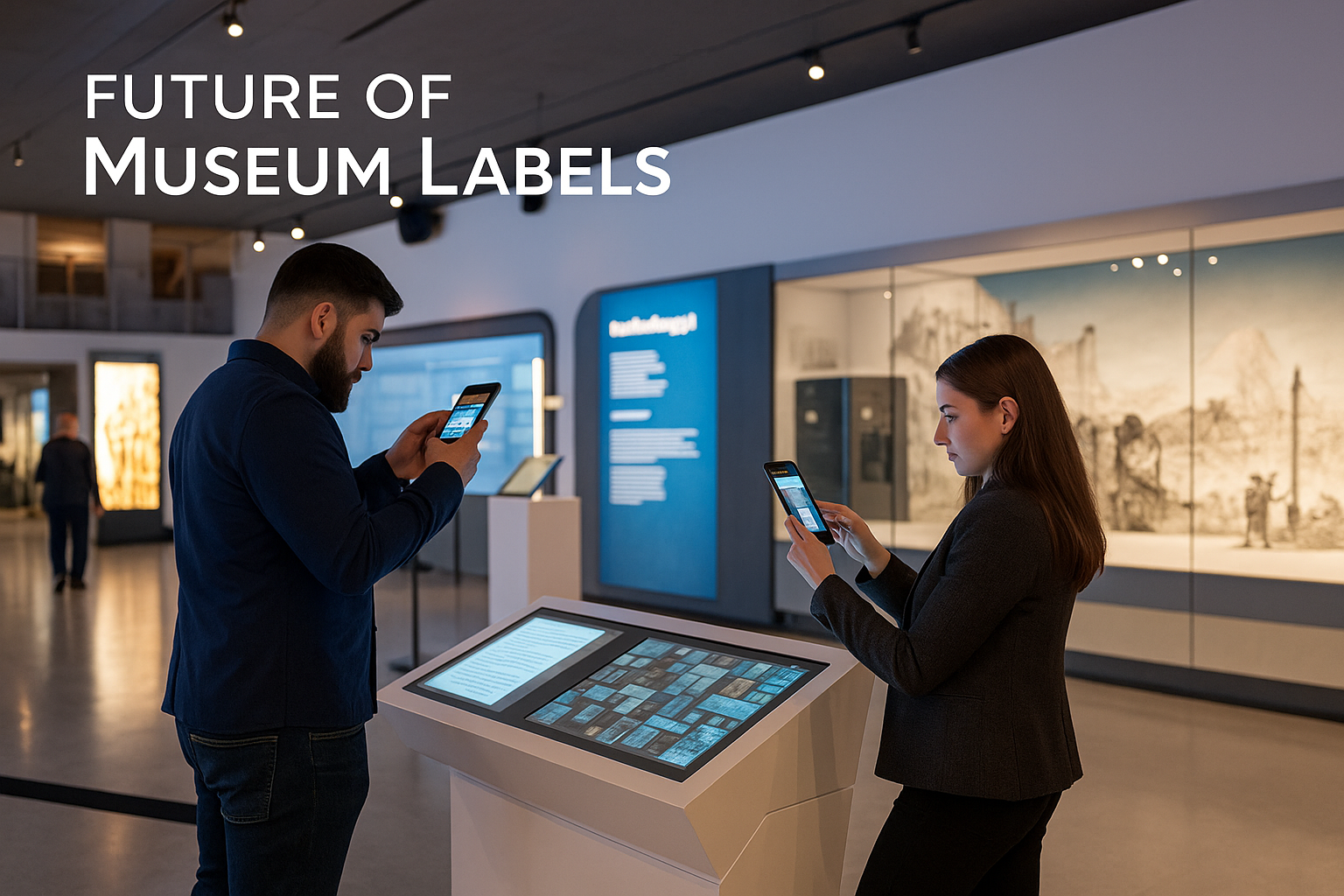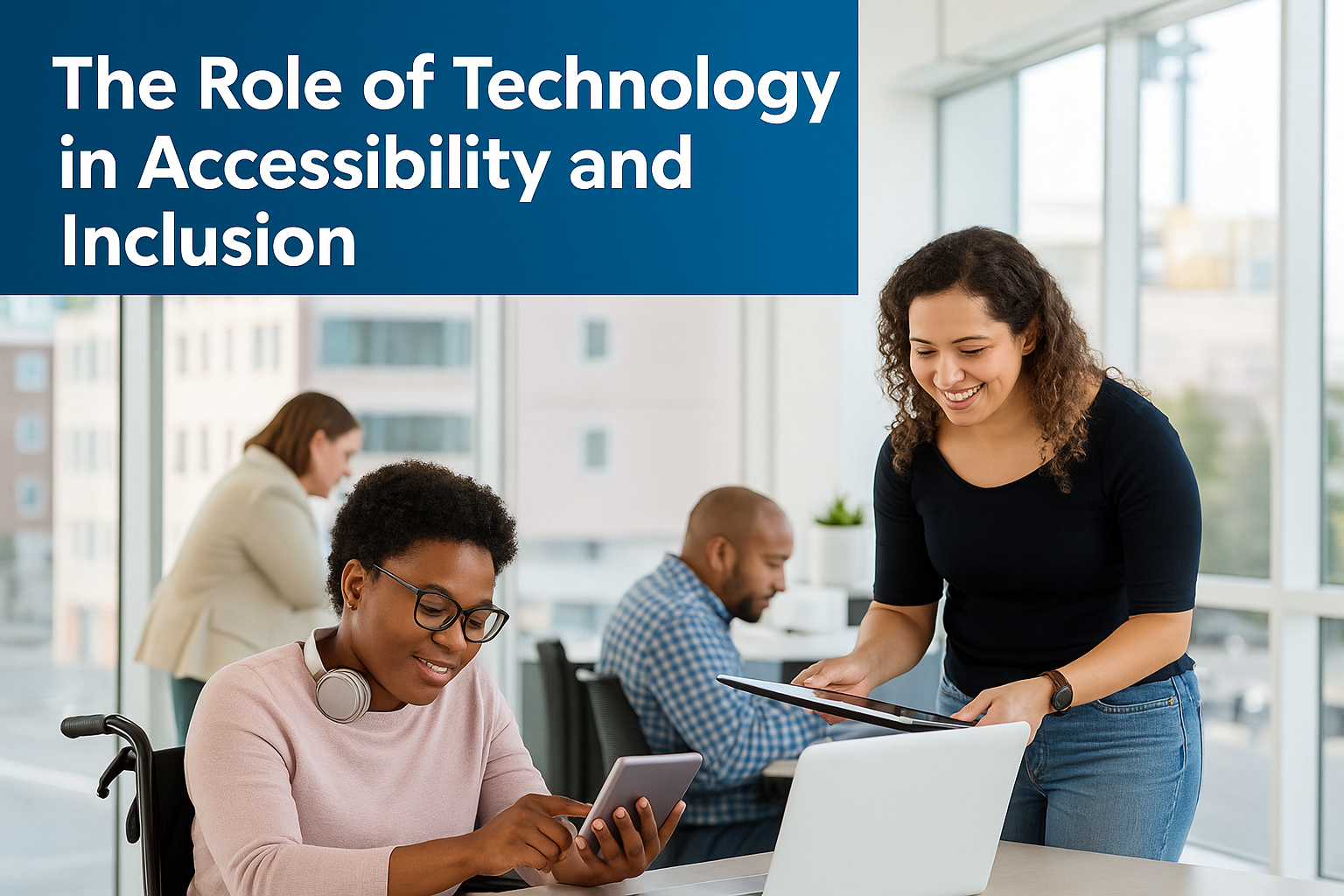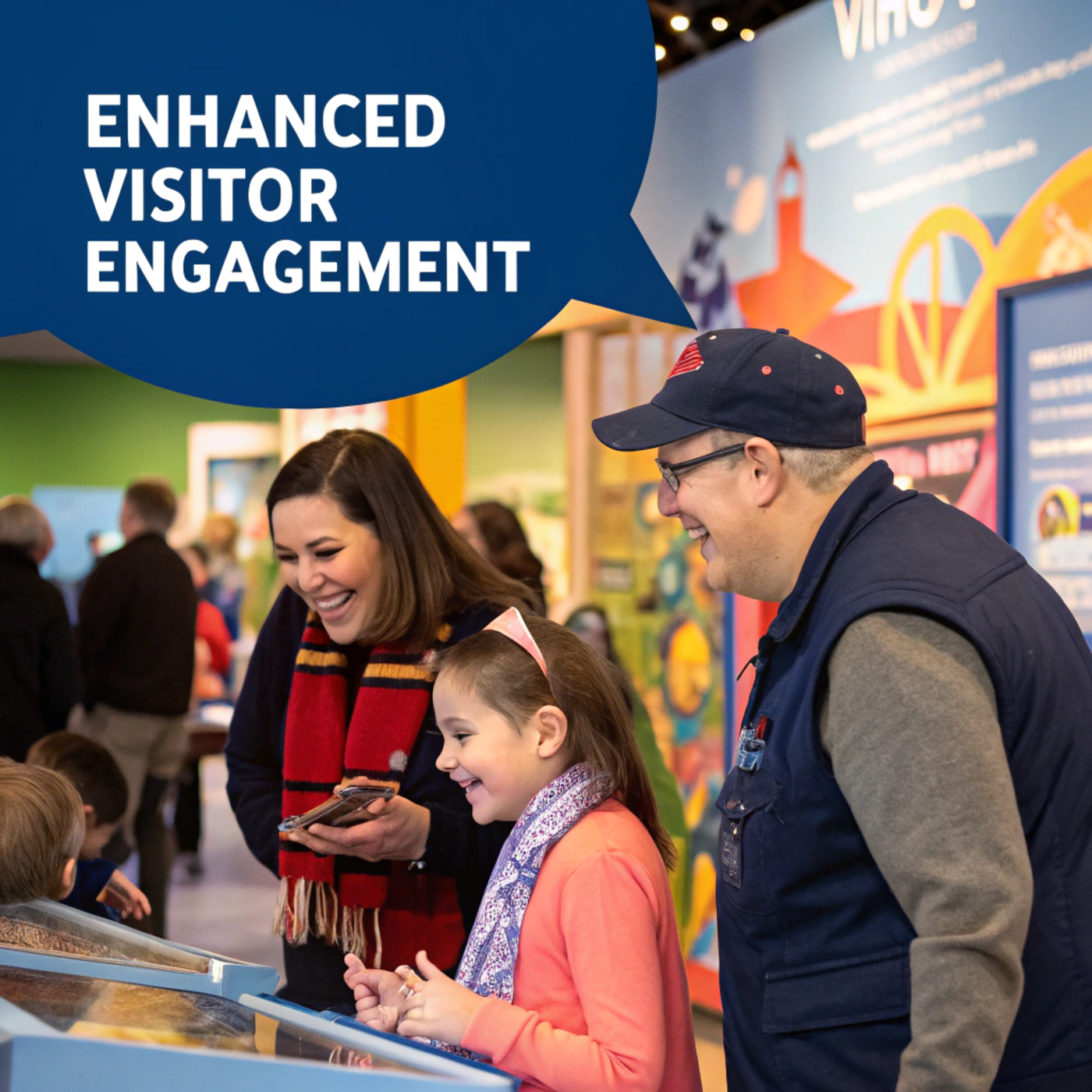The Future of Museum Labels: Digital, AR, and Interactive Experiences

Imagine walking through a museum where each label isn’t just a static piece of text but an interactive portal into the past. You’re equipped with digital tools and augmented reality, which transform exhibits into vibrant stories customized to your interests. These innovations invite you to engage deeply, nurturing a personalized and all-encompassing experience. As you investigate this new frontier of museum visits, what possibilities await in the interaction of technology and cultural heritage?
The Rise of Digital Labels in Museums
As museums adopt technology, digital labels are transforming how you engage with exhibits by merging curatorial vision with interactive innovation.
You’re invited to investigate creativity and history in new, vibrant ways. Digital signage replaces static text, offering layers of information that deepen your understanding.
Imagine strolling through galleries where digital displays adapt to your pace, providing knowledge customized to your curiosity.
With mobile applications, your experience becomes personal and immersive. Scan a code, and your smartphone reveals stories that connect you to the creativity and its origins.
This interdisciplinary approach encourages a sense of belonging, making the museum a welcoming space. You’re not just an observer; you’re part of a dialogue that transcends traditional barriers, embracing innovation and community.
Augmented Reality: Bringing Exhibits to Life
Augmented reality (AR) is revolutionizing how you experience museum exhibits, transforming static displays into lively, interactive storytelling platforms. By integrating virtual storytelling with traditional artifacts, AR crafts immersive experiences that invite you to step into history.
Imagine standing before an ancient relic, your device bringing it to life with rich narratives and animations. Suddenly, you’re not just a visitor; you’re an active participant in a dialogue between past and present.
AR’s interdisciplinary approach bridges creativity, technology, and education, nurturing a sense of belonging in shared cultural narratives. It’s more than just viewing; it’s engaging with layers of context that deepen your connection to the exhibit.
Through AR, museums become energetic spaces where stories unfold and your curiosity finds a home.
Interactive Experiences: Engaging the Modern Visitor
When stepping into a modern museum, you’re not just an observer; you’re an integral part of an interactive experience designed to engage your senses and intellect. Through interactive storytelling, you connect with creativity and history in significant ways, unraveling narratives that strike a chord deeply.
Immersive installations invite you to investigate, touch, and feel, making each visit a unique expedition of discovery. As you engage with these exhibits, you become part of a community that values shared experiences and collective learning.
The curatorial vision blends disciplines, merging technology with tradition to spark curiosity and cultivate understanding. Original concepts challenge you to think analytically, encouraging dialogue and reflection.
Personalization and Customization in Museum Tours
How do modern museums cater to your unique interests and preferences? By offering personalized tours and customized experiences, museums connect with you on a deeper plane.
Visitor preferences shape customized content through interactive storytelling, enhancing audience engagement. User feedback is essential in shaping curated content, ensuring exhibitions connect with varied visitor demographics.
With responsive design, museums adapt tours to your needs, offering a comprehensive experience that feels like it was crafted just for you.
Imagine exploring an exhibition where every detail corresponds with your passions, creating a sense of belonging.
Museums endeavor to transform visits into meaningful experiences, where innovation meets tradition. By embracing these interdisciplinary approaches, they redefine how you engage with creativity and history, ensuring your experience is memorable and uniquely yours.
The Role of Technology in Accessibility and Inclusion
You can transform museum experiences by embracing technology to enhance visitor engagement, breaking language barriers, and supporting varied needs.
Imagine offering multilingual audio guides or interactive displays that adapt to individual preferences, making creative expression accessible to everyone.
Through these innovations, you’re not just showcasing artifacts; you’re creating a welcoming space for all visitors to connect with heritage meaningfully.
Enhancing Visitor Engagement
While technology continues to develop, museums are leveraging its power to craft more welcoming and accessible experiences that fascinate and engage visitors. By embracing digital tools, you’re invited to investigate exhibits that connect with your personal path, nurturing emotional connections that linger long after your visit.
Imagine interactive displays that adapt based on visitor feedback, creating a vibrant dialogue between you and the creative expression. This curatorial vision guarantees each visitor feels seen and heard, forging a sense of belonging.
Through an interdisciplinary approach, museums blend creative expression, history, and technology in groundbreaking ways. Augmented reality and immersive installations make the past come alive, inviting you to step into different worlds.
This isn’t just a visit; it’s a shared experience, deepening your connection to heritage.
Breaking Language Barriers
As museums endeavor to become more all-encompassing, breaking language barriers arises as an essential focus.
Imagine walking into a gallery where multilingual interfaces greet you, effortlessly translating labels and texts to your preferred language.
This isn’t just about words; it’s about connecting you to cultural context, allowing you to truly belong, regardless of your linguistic background.
Supporting Diverse Needs
Embracing technology in museums isn’t just a trend; it’s a revolutionary approach to openness. By prioritizing accessible design, you invite everyone to engage with creativity and history in meaningful ways.
Imagine a museum where digital tools offer sensory experiences customized to varied needs. Interactive displays can narrate stories with audio, visual, and tactile elements, ensuring you connect deeply, regardless of ability.
Augmented reality empowers you to investigate artifacts in rich, multidimensional layers, breaking barriers of accessibility. Technology transforms traditional spaces into lively ecosystems where every visitor feels seen and valued.
As you wander through these groundbreaking environments, you’re not just a spectator; you’re an integral part of a shared cultural fabric. Here, belonging isn’t just an idea—it’s a lived experience.
Challenges and Opportunities for Future Museum Innovations
As you investigate the future of museum innovations, consider the challenge of smoothly integrating technology without overshadowing the artifacts themselves.
Your mission is to enhance visitor engagement through interactive experiences that inspire curiosity and nurture a deeper connection with the exhibits.
Welcome an interdisciplinary approach that combines technology, creativity, and storytelling to redefine the visitor experience.
Navigating Technological Integration
While museums strive to enhance visitor engagement, the integration of technology presents both challenges and opportunities for future advancements. As you adopt technology, consider how it corresponds with your curatorial vision.
It’s crucial to promote digital literacy among your staff and visitors, ensuring everyone feels included in this digital transformation. By bridging the gap between traditional exhibits and cutting-edge technology, you create a sense of belonging and community.
An interdisciplinary approach is vital. Collaborate with technologists, educators, and designers to craft groundbreaking concepts that connect with varied audiences.
As you steer through these waters, keep in mind that successful integration means more than just adding gadgets; it’s about weaving technology smoothly into the narrative, enriching the visitor experience while preserving the museum’s essence.
Enhancing Visitor Engagement
Integrating technology into museum experiences opens doors to groundbreaking ways of enhancing visitor engagement. You’re no longer a passive observer; instead, you’re an active participant in a lively, interactive environment.
Experiential learning becomes your pathway to deep connections with exhibits. Imagine using augmented reality to see creativity come to life or interactive screens that invite your touch, offering layers of stories and understanding customized to your curiosity.
Effortlessly, your expedition becomes personalized, and your engagement leaves a mark through visitor feedback. This feedback cultivates a community-driven approach, ensuring that your voice shapes future innovations.






